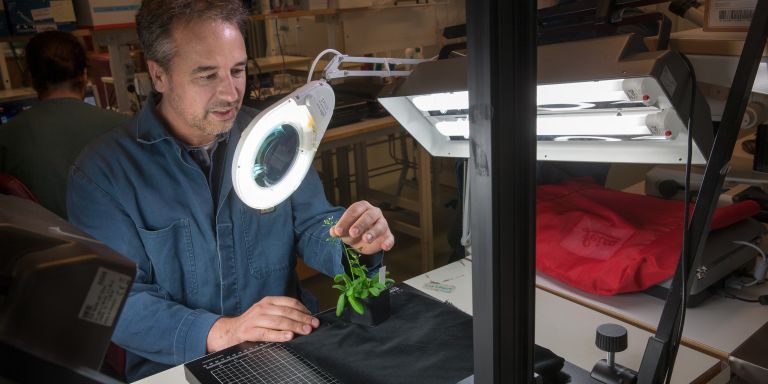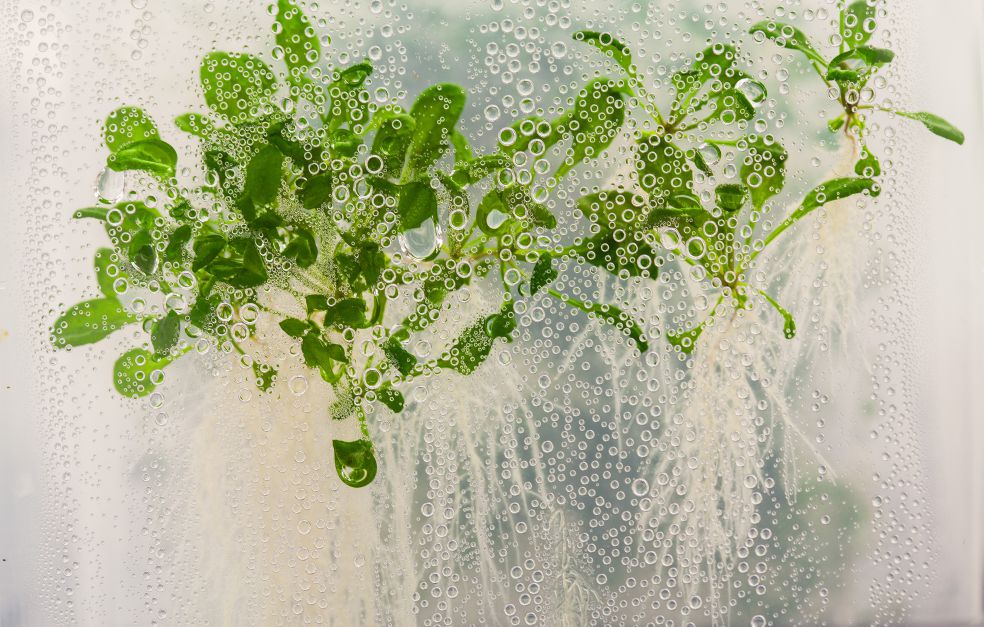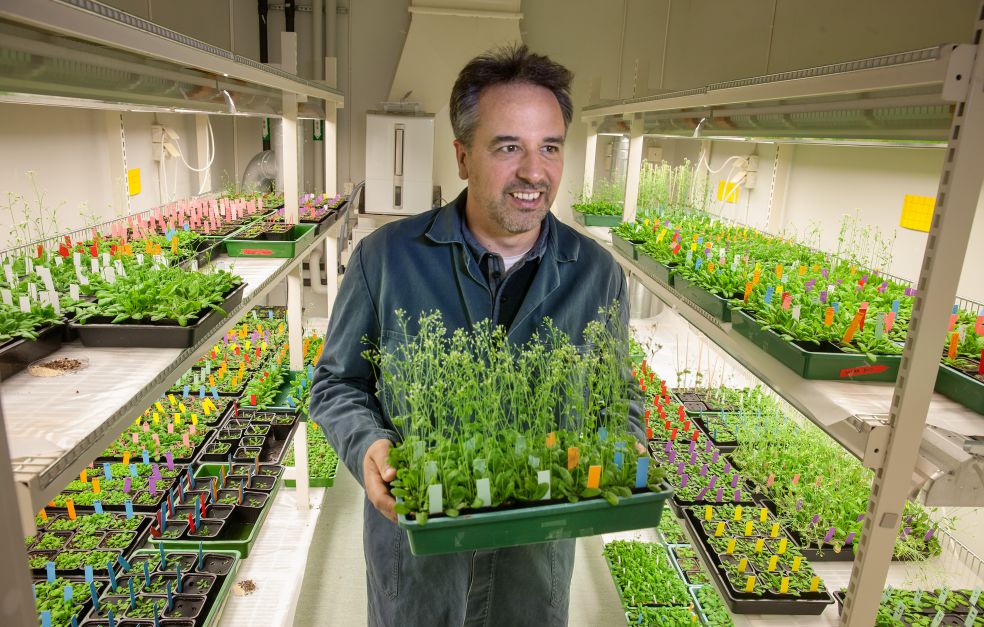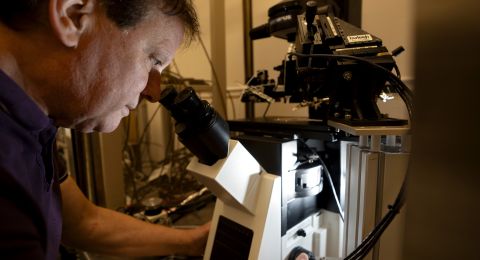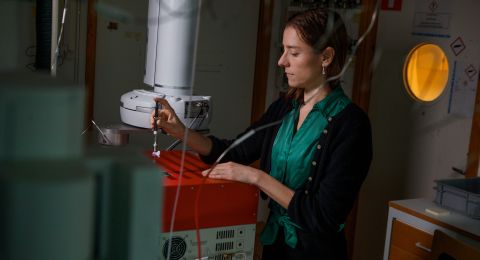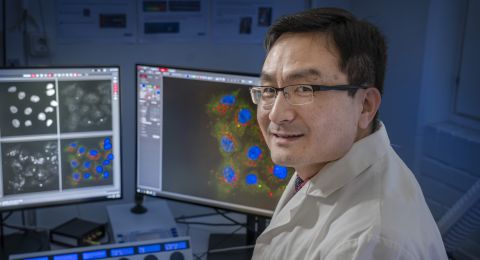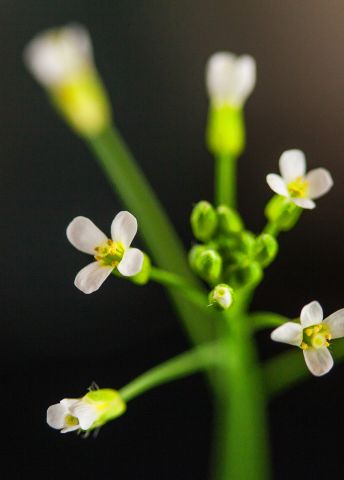
Project Grant 2016
Epigenetic and Metabolic Control of Flowering Time
Principal investigator:
Markus Schmid, Professor in plant physiology
Co-investigators:
Umeå University
Johannes Hanson
Swedish University of Agricultural Sciences
Ove Nilsson
Karin Ljung
Institution:
Umeå University
Grant in SEK:
SEK 28.7 million over five years
Markus Schmid pays a visit to one of the many plant rooms at the Umeå Plant Science Centre (UPSC), where he is guest professor. In truth, the reason for his visit is so he can be photographed in a photogenic setting, but he takes the opportunity to examine a tray of thale cress (Arabidopsis thaliana), which appears to be about four weeks old.
“The plants are already in bud, and will flower in about a week,” he explains.
Once the plants have flowered, all the seeds will be collected, dried, and used to produce a new generation.
“The flowers are small – so crossing plants is a really fiddly job. I don’t do it myself any more very often, but I used to,” comments Schmid.
The seeds are sown in small pots, which are placed in a glasshouse with controlled lighting, heating and nutrient supply. After just a few days leaves appear, forming small rosettes.”
“At a certain point the plant decides to form a stem with a flower. Once that decision to start flowering has been made there’s no going back. No more leaves will form; it’s all about flowering.”
Researching the flowering decision
Schmid and his research team have received project funding from the Knut and Alice Wallenberg Foundation to study exactly what it is that causes plants to decide to flower. Flowering is an important period in the life cycle of a plant. A plant’s ability to reproduce and contribute to the survival of its own species is assured when flowering occurs at the right point in time. If flowering starts too early, the result may be a poor crop of biomass as well as fruit. Most of all, late flowering often means fewer seeds of poorer quality.
Flowering is governed by a complicated genetic network, which interprets signals both within cells and from the surrounding environment. Many of the genes that influence flowering timing have been identified over the past few decades. The genes are controlled by various external signals, such as length of daylight and temperature. The plant’s metabolism and hormonal state also play a major part.
It used to be thought that there were genetically defined paths that controlled flowering as a response to a specific input. In recent years it has become increasingly obvious that the timing of flowering is not the result of a simple rule-bound model. It is triggered by numerous signals, often contradictory, which give the plant a degree of flexibility in its choice of flowering time.
“We only partly understand how plants interpret all information before finally deciding whether or not to flower,” Schmid says.
The decision is taken in special tissues and cells, particularly those in the plant’s conductive tissue and in the growing tip of the shoot, known as the “shoot apical meristem”.
“There are millions of cells, but only a fraction of them respond to signals governing flowering time. What we don’t understand is how various biological relationships integrate, and how different functions are turned on and off. How is growth regulated, for instance, here in Umeå in the north of Sweden, in early June? The days are long, but this year in particular early summer has been fairly cool. How do plants interpret such contradictory signals?”
Studying complex networks
The cells being examined are so small that it has not so far been possible to analyze them reliably. Thanks to new technology it is now possible to examine complex networks in individual tissues, right down to cell type level.
“We have adopted the technique over the past few years, and can use it specifically to identify sensitivity to changes in temperature. We will be isolating cells and cell nuclei to study aspects such as gene expressions and the levels of proteins and metabolites and hormones that play a part in the flowering decision,” Schmid explains.
The studies are being performed on thale cress, which is an annual weed, and also on a hybrid variety of aspen, which is a fairly fast-growing species of broadleaf tree.
“They represent two species of plant with fundamentally different life strategies. Our findings will therefore show the aspects of flowering that are specific to annual and woody perennial plants, respectively.”
The research team hopes to be able to identify new and hitherto unknown flowering time genes, and also new networks for the entire process. New insights will make it easier to predict how different plants will react to global warming. It is tempting to imagine that a warmer climate may favor vegetation. But it may also increase the stress on plants, causing them to produce fewer seeds.
“We want to know how plants adapt to different environments. If we know that, we will be able to propagate plants capable of coping with climate change.”
Text Carin Mannberg-Zackari
Translation Maxwell Arding
Photo Magnus Bergström
